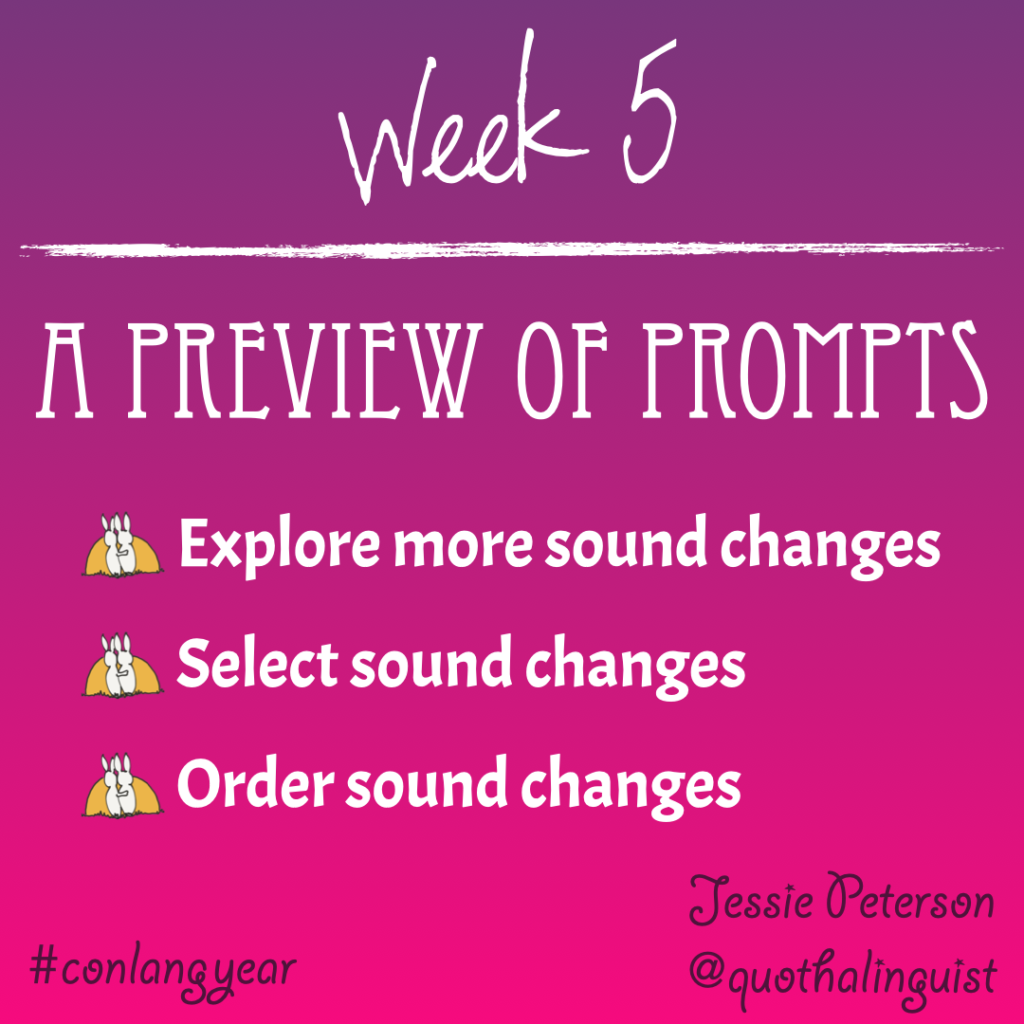
Day 29, January 29
Goal: Explore sound changes for vowels
Note: Vowels are especially prone to shifting as languages evolve.
Tip: Focus on ways you want to expand (or shrink) your proto-vowel inventory as you explore these changes.
Work focus: Learn/Brainstorm/Try
Day 30, January 30
Goal: Explore stress-sensitive sound changes
Note: Sound changes do not have to affect every syllable equally.
Tip: Unstressed syllables are more prone to reduction and deletion sound changes.
Work focus: Learn/Brainstorm/Try
Day 31, January 31
Goal: Organize notes and select sound changes
Note: There is no “correct” number of sound changes you need to select for your language.
Tip: You can always return to your sound changes later and add to them as you expand the language.
Work focus: Solidify/Write/Share
Day 32, February 1
Goal: Test your sound changes as a package
Note: Sound changes affect language in an orderly fashion.
Tip: Solidifying the order now will save you from headaches later.
Work focus: Learn/Brainstorm/Try
Day 33, February 2
Goal: Create five more animate nouns to test sound changes
Note: If you want to create more forms, keep a running list of potential proto-forms not yet assigned to meanings.
Tip: Really focus on creating forms that introduce sounds in new positions to test your sound changes.
Work focus: Create/Make/List
Day 34, February 3
Goal: Try compounding forms and test again
Note: Sometimes sound changes are most noticeable in compound and affixed forms.
Tip: These are not actual compounds yet—they are just for testing purposes.
Work focus: Learn/Brainstorm/Try
Day 35, February 4
Goal: Solidify your list of ordered sound changes
Note: Document these sound changes and keep them with your sound inventory notes.
Tip: Using a tool like Lexurgy can help you quickly test sound changes on future forms.
Work focus: Solidify/Write/Share
